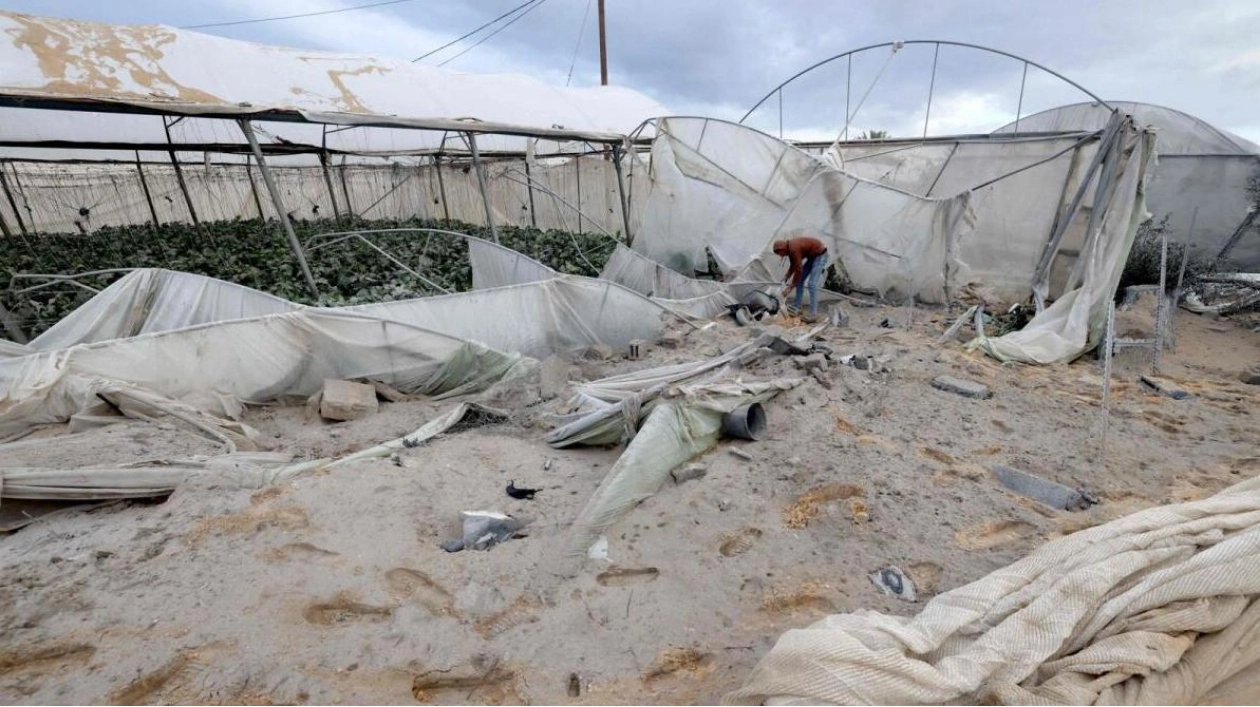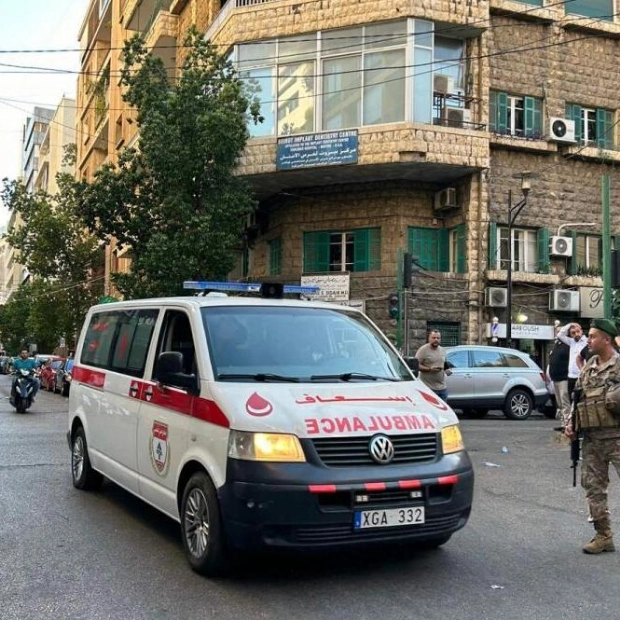In the southern Gaza coastal area of Al-Mawasi, Nedal Abu Jazar surveyed his field, still marked by fresh tank tracks, and mourned the devastation caused by the war to his trees and crops. 'Look at the destruction,' the 39-year-old farmer told AFP, clutching a torn-out tomato plant. He gestured towards his greenhouse, its metal framework and white plastic sheeting scattered across the plot, located within a humanitarian zone designated by the Israeli army. 'People were peacefully sitting on their farmland... suddenly tanks arrived and fired at us, followed by air strikes.' Abu Jazar recounted that the Israeli operation in late June obliterated about 40 dunams (10 acres) of land and claimed the lives of five laborers.
This scenario is not unique. Across Gaza, 57% of agricultural land has been ravaged since the onset of the war, according to a joint assessment in June by the UN's FAO and UNOSAT. This destruction jeopardizes Gaza's food sovereignty, as 30% of the Palestinian territory's food consumption is sourced from its agricultural land, explained Matieu Henry of the Food and Agriculture Organisation. 'If nearly 60% of the agricultural land has been damaged, this could significantly impact food security and supply.' The Gaza Strip's agricultural exports, valued at $44.6 million in 2022, plummeted to zero following the October 7 attack on southern Israel, which resulted in the deaths of 1,195 people, predominantly civilians, according to an AFP tally based on Israeli figures. Israel's retaliatory offensive has reportedly killed at least 38,098 people, mostly civilians, according to the Hamas-run territory's health ministry.
The assessment of agricultural damage coincides with the UN's hunger monitoring system estimating in June that 96% of Gaza faces high levels of acute food insecurity. The Israeli army, contacted by AFP, stated it does not intentionally target agricultural land, claiming that Hamas frequently operates from within orchards, fields, and agricultural land. The impact is particularly severe in the northern Palestinian territory, where 68% of agricultural land is damaged, with the southern area, including parts of Al-Mawasi, experiencing a significant increase in damage due to recent military operations. UNOSAT's Lars Bromley explained that the damage is typically caused by heavy vehicle activity, bombing, shelling, and other conflict-related dynamics, such as areas burning.
In the vicinity of Rafah, 34-year-old farmer Ibrahim Dheir is overwhelmed by the loss of 20 dunams (five acres) of land he leased, along with all his farming equipment. 'As soon as the Israeli bulldozers and tanks entered the area, they started bulldozing cultivated lands with various trees, including fruits, citrus, guava, as well as crops like spinach, molokhia (jute mallow), eggplant, squash, pumpkin, and sunflower seedlings,' he detailed, recounting the destruction of the area's once-abundant agriculture. Dheir, whose family exported produce to the West Bank and Israel, now feels destitute. 'We used to rely on agriculture for our daily livelihood, but now there's no work or income.' Similarly, farmer Abu Mahmoud Za'arab finds himself without any source of income. The 60-year-old's 15 dunams (3.7 acres) of land, once home to crops and fruit trees, was completely wiped out by the Israeli army, leaving only barren pits.
The damage to Gaza's farmland extends beyond the immediate aftermath of tank tracks and explosions, according to Bromley of UNOSAT. 'With modern weaponry, a certain percentage is always going to fail. Tank shells won't explode, artillery shells won't explode... so clearing that unexploded ordnance is a massive task,' he explained. It will necessitate 'probing every centimetre of the soil before you can allow the farmers back onto it.' Despite the risks, Dheir yearns to return to farming. 'We want the war to stop and things to return to how they were so we can farm and cultivate our lands again.'






